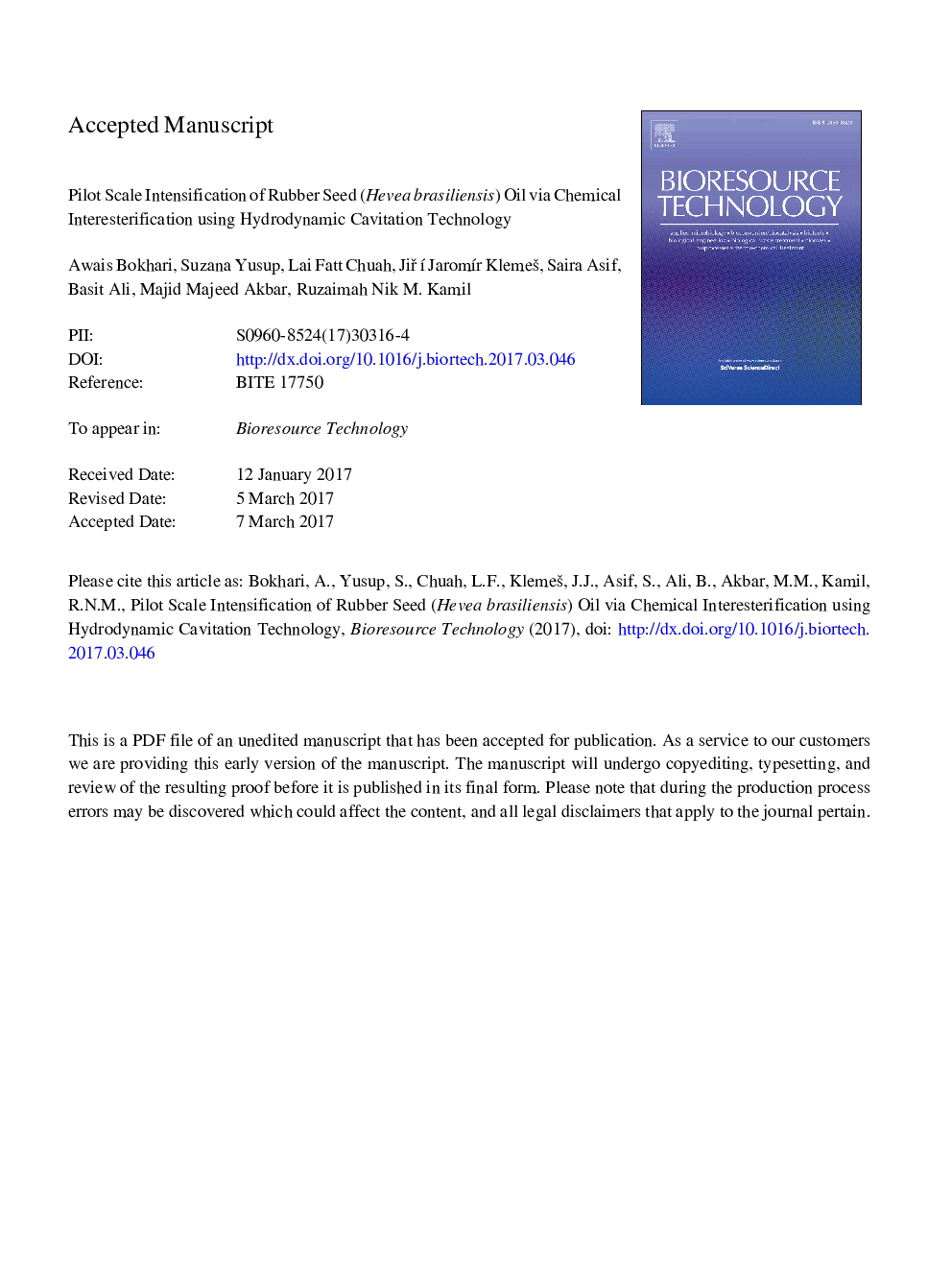| Article ID | Journal | Published Year | Pages | File Type |
|---|---|---|---|---|
| 4996499 | Bioresource Technology | 2017 | 36 Pages |
Abstract
Chemical interesterification of rubber seed oil has been investigated for four different designed orifice devices in a pilot scale hydrodynamic cavitation (HC) system. Upstream pressure within 1-3.5 bar induced cavities to intensify the process. An optimal orifice plate geometry was considered as plate with 1 mm dia hole having 21 holes at 3 bar inlet pressure. The optimisation results of interesterification were revealed by response surface methodology; methyl acetate to oil molar ratio of 14:1, catalyst amount of 0.75 wt.% and reaction time of 20 min at 50 °C. HC is compared to mechanical stirring (MS) at optimised values. The reaction rate constant and the frequency factor of HC were 3.4-fold shorter and 3.2-fold higher than MS. The interesterified product was characterised by following EN 14214 and ASTM D 6751 international standards.
Keywords
RSOF-valueCCDKOHFFAp-valueFree fatty acidInteresterificationstandard deviationOptimisationanalysis of varianceANOVAtriglycerideprocess intensificationMechanical stirringHydrodynamic cavitationResponse surface methodologyRSMRubber seed oilCoefficient of VariationCentral composite designFatty acid methyl esterFAME یا fatty acid methyl esters Potassium HydroxideGas chromatography
Related Topics
Physical Sciences and Engineering
Chemical Engineering
Process Chemistry and Technology
Authors
Awais Bokhari, Suzana Yusup, Lai Fatt Chuah, JiÅà JaromÃr KlemeÅ¡, Saira Asif, Basit Ali, Majid Majeed Akbar, Ruzaimah Nik M. Kamil,
